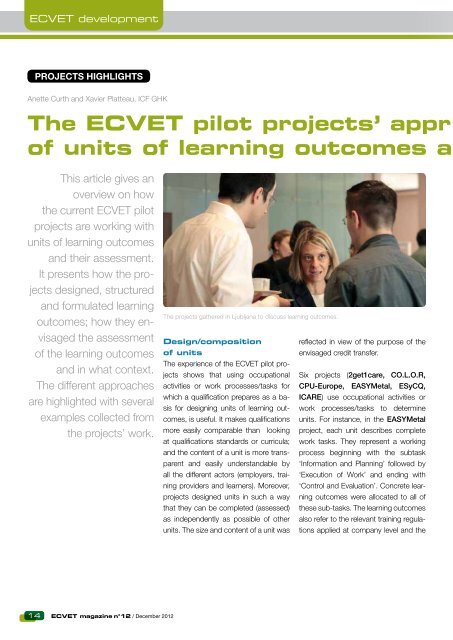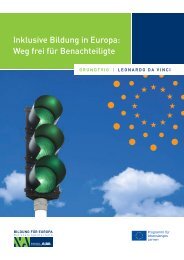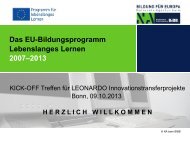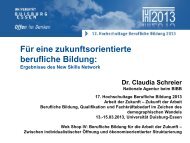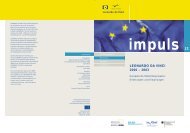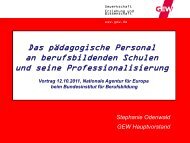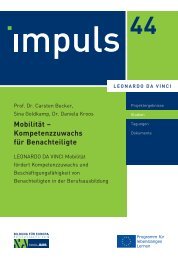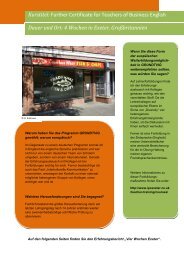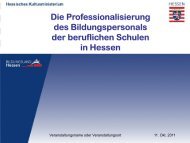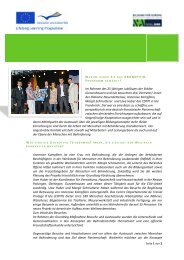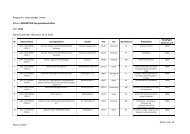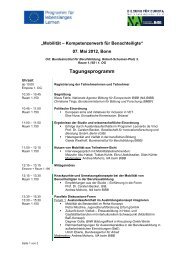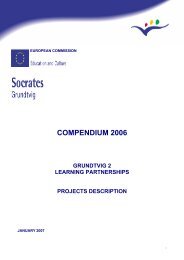You also want an ePaper? Increase the reach of your titles
YUMPU automatically turns print PDFs into web optimized ePapers that Google loves.
ECVET development<br />
PROJECTS HIGHLIGHTS<br />
Anette Curth and Xavier Platteau, ICF GHK<br />
The ECVET pilot projects’ appr<br />
of units of learning outcomes a<br />
This article gives an<br />
overview on how<br />
the current ECVET pilot<br />
projects are working with<br />
units of learning outcomes<br />
and their assessment.<br />
It presents how the projects<br />
designed, structured<br />
and formulated learning<br />
outcomes; how they envisaged<br />
the assessment<br />
of the learning outcomes<br />
and in what context.<br />
The different approaches<br />
are highlighted with several<br />
examples collected from<br />
the projects’ work.<br />
14 ECVET magazine n°12 / December 2012<br />
The projects gathered in Ljubljana to discuss learning outcomes.<br />
Design/composition<br />
of units<br />
The experience of the ECVET pilot projects<br />
shows that using occupational<br />
activities or work processes/tasks for<br />
which a qualification prepares as a basis<br />
for designing units of learning outcomes,<br />
is useful. It makes qualifications<br />
more easily comparable than looking<br />
at qualifications standards or curricula;<br />
and the content of a unit is more transparent<br />
and easily understandable by<br />
all the different actors (employers, training<br />
providers and learners). Moreover,<br />
projects designed units in such a way<br />
that they can be completed (assessed)<br />
as independently as possible of other<br />
units. The size and content of a unit was<br />
reflected in view of the purpose of the<br />
envisaged credit transfer.<br />
Six projects (2get1care, CO.L.O.R,<br />
CPU-Europe, EASYMetal, ESyCQ,<br />
ICARE) use occupational activities or<br />
work processes/tasks to determine<br />
units. For instance, in the EASYMetal<br />
project, each unit describes complete<br />
work tasks. They represent a working<br />
process beginning with the subtask<br />
‘Information and Planning’ followed by<br />
‘Execution of Work’ and ending with<br />
‘Control and Evaluation’. Concrete learning<br />
outcomes were allocated to all of<br />
these sub-tasks. The learning outcomes<br />
also refer to the relevant training regulations<br />
applied at company level and the


